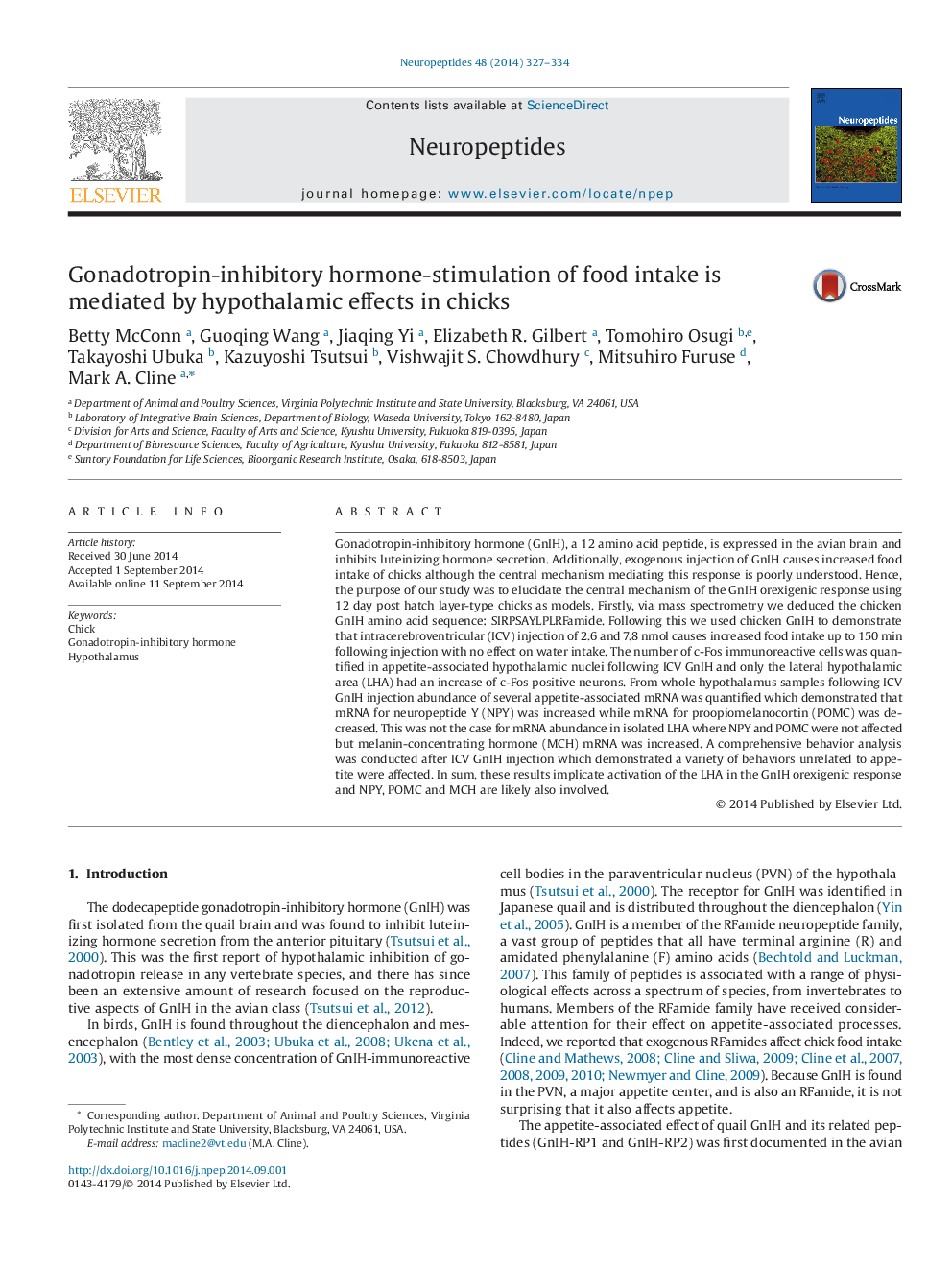| Article ID | Journal | Published Year | Pages | File Type |
|---|---|---|---|---|
| 2808065 | Neuropeptides | 2014 | 8 Pages |
•We deduced the chicken GnIH amino acid sequence: SIRPSAYLPLRFamide.•ICV GnIH is associated with lateral hypothalamic area activation.•ICV GnIH is associated with changes in NPY, MCH and POMC mRNA concentration.
Gonadotropin-inhibitory hormone (GnIH), a 12 amino acid peptide, is expressed in the avian brain and inhibits luteinizing hormone secretion. Additionally, exogenous injection of GnIH causes increased food intake of chicks although the central mechanism mediating this response is poorly understood. Hence, the purpose of our study was to elucidate the central mechanism of the GnIH orexigenic response using 12 day post hatch layer-type chicks as models. Firstly, via mass spectrometry we deduced the chicken GnIH amino acid sequence: SIRPSAYLPLRFamide. Following this we used chicken GnIH to demonstrate that intracerebroventricular (ICV) injection of 2.6 and 7.8 nmol causes increased food intake up to 150 min following injection with no effect on water intake. The number of c-Fos immunoreactive cells was quantified in appetite-associated hypothalamic nuclei following ICV GnIH and only the lateral hypothalamic area (LHA) had an increase of c-Fos positive neurons. From whole hypothalamus samples following ICV GnIH injection abundance of several appetite-associated mRNA was quantified which demonstrated that mRNA for neuropeptide Y (NPY) was increased while mRNA for proopiomelanocortin (POMC) was decreased. This was not the case for mRNA abundance in isolated LHA where NPY and POMC were not affected but melanin-concentrating hormone (MCH) mRNA was increased. A comprehensive behavior analysis was conducted after ICV GnIH injection which demonstrated a variety of behaviors unrelated to appetite were affected. In sum, these results implicate activation of the LHA in the GnIH orexigenic response and NPY, POMC and MCH are likely also involved.
